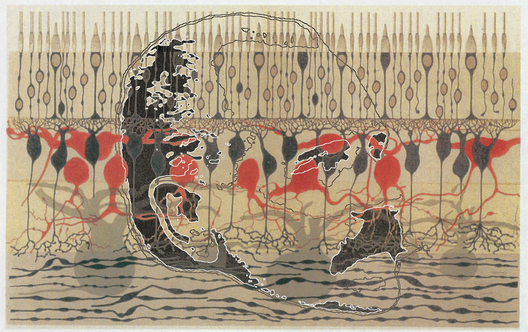Ferruccio Tartuferi1852–1925
The structure of the retina puzzled students of vision for centuries, long before the microscope was enlisted to observe its intricate connections. The illustration combines one of the most beautiful early representations of its microscopic structure with the anatomist who produced it. Tartuferi published the coloured illustration of the retina in 1887; his portrait is based upon a photograph from the archives of the University of Pavia, where he worked. Tartuferi was a student of Golgi who had developed the reazione nera (black reaction) in 1873. The power of the procedure was initially demonstrated on the arborizations of Purkinje cells in the cerebellum, but interest soon shifted to the retina where it was first applied by Tartuferi. In his diagram the horizontal and amacrine cells are clearly represented, as are the rods, cones and bipolar cells. Despite the detailed representation of the constituent parts of the retina, Tartuferi retained Golgi’s view that the nervous system was a connected and continuous unit, a reticulum. The structure of the retina had been speculated upon and examined microscopically long before Tartuferi’s diagram was printed, but without the advantages that the silver staining method conferred. It remains an enigma that Tartuferi adhered to his mentor’s reticular conception of the nervous system despite producing such a beautiful illustration of the individual elements in the retina.
